
Understanding Behavioral Therapy in Stress and Anxiety Management
Stress and anxiety are pervasive issues impacting mental and physical health worldwide. Behavioral therapy techniques have emerged as essential tools in managing these conditions effectively. This article explores evidence-based behavioral strategies, with particular focus on cognitive-behavioral therapy (CBT), and how they can be employed to reduce stress and anxiety for improved overall well-being.
Overview of Behavioral Therapy Techniques for Stress and Anxiety
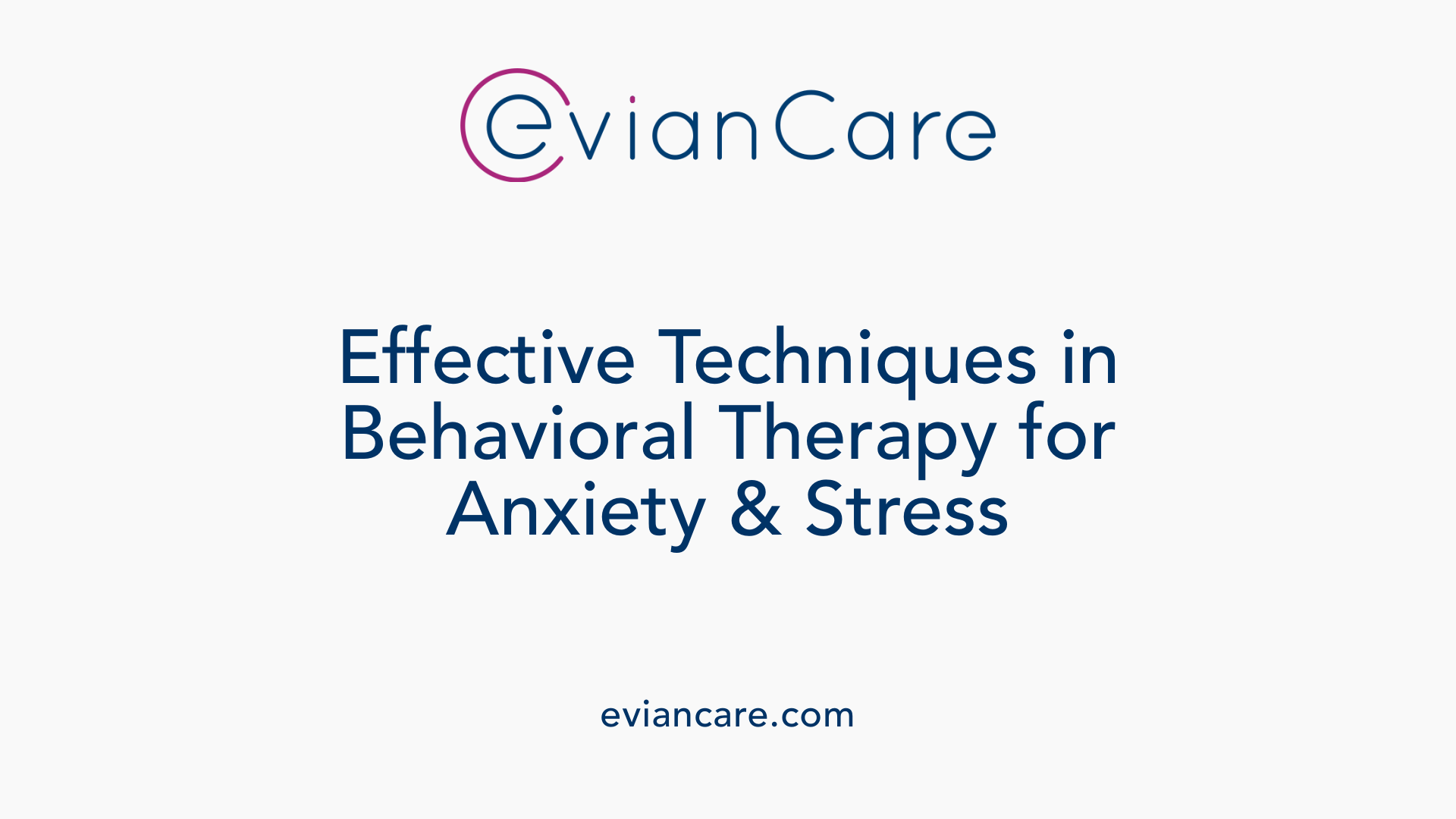
What are some evidence-based behavioral therapy techniques used for stress and anxiety management?
Several established techniques are widely used to manage stress and anxiety effectively. One of the most prominent is cognitive-behavioral therapy (CBT), which focuses on helping individuals identify and challenge unhelpful thoughts and behaviors that sustain anxiety. By restructuring distorted thinking patterns, clients learn healthier ways of responding to stressors.
In addition to CBT, mindfulness-based interventions like mindfulness-based stress reduction (MBSR) have gained recognition. These practices teach individuals to observe their thoughts and feelings non-judgmentally, promoting emotional regulation and calmness, with some studies showing they have effects comparable to medication.
Relaxation methods such as progressive muscle relaxation (PMR), diaphragmatic or deep breathing exercises, and biofeedback are also effective. They directly target the physical symptoms of stress—like muscle tension and rapid breathing—helping to calm the nervous system.
Complementary approaches include physical activities like yoga, tai chi, and qigong. These practices combine movement, breath control, and mindfulness, offering additional relief for those experiencing generalized anxiety or stress-related disorders, especially in children.
Furthermore, hypnosis has shown promising results, especially in reducing anxiety associated with medical procedures. When performed by trained professionals, it can create a state of focused attention that diminishes anxiety responses.
In summary, a variety of evidence-backed behavioral techniques are available, often used in combination, to provide comprehensive stress and anxiety management tailored to individual needs.
The Role of CBT in Addressing Anxiety and Stress
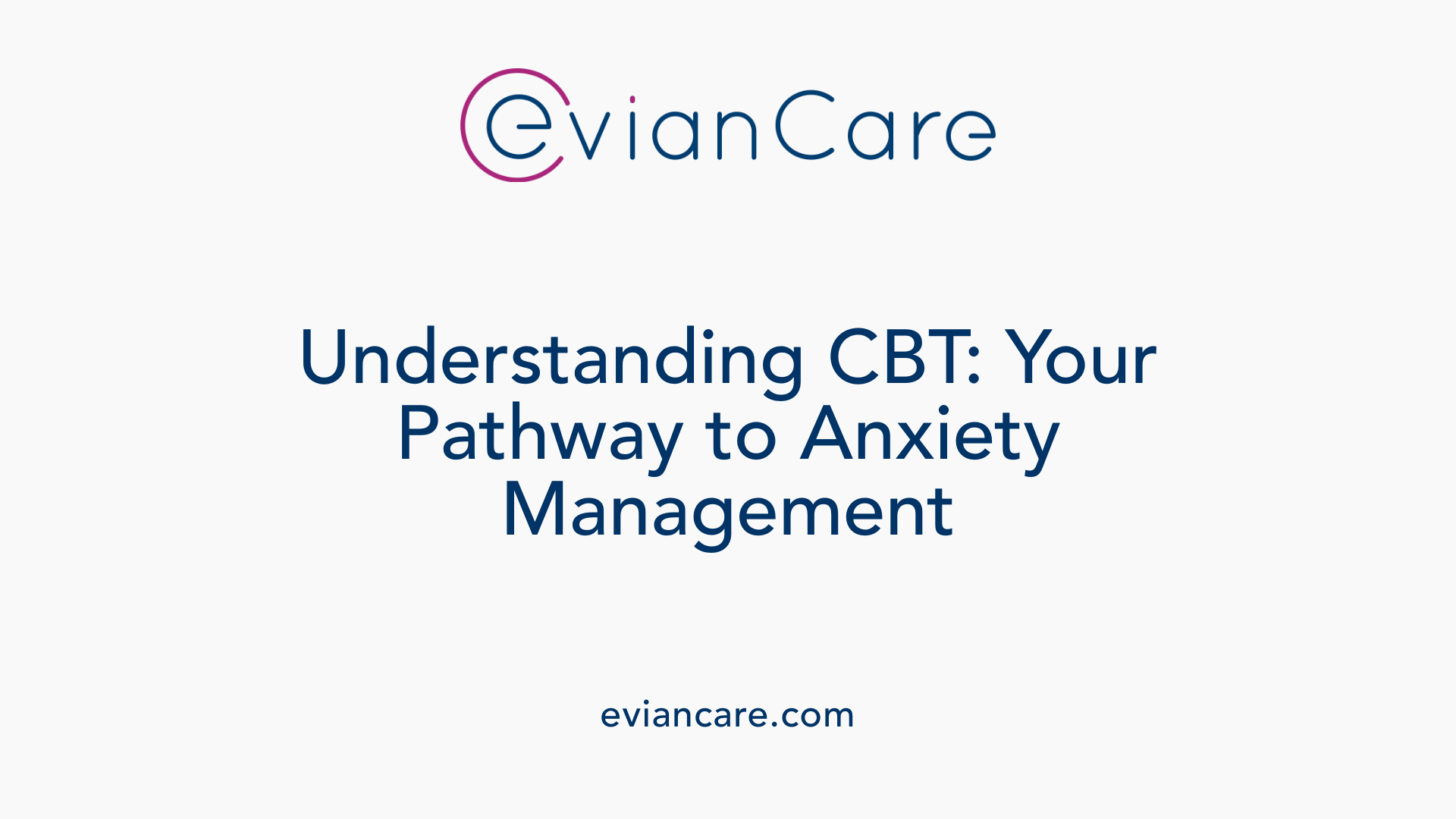
What are the core principles of CBT?
Cognitive-behavioral therapy (CBT) is grounded in the idea that our thoughts, feelings, and behaviors are interconnected. Unhelpful thoughts and beliefs can lead to negative emotions and maladaptive behaviors, which in turn can maintain or worsen anxiety and stress. The therapy aims to identify these patterns and modify them for healthier responses.
CBT emphasizes a collaborative partnership between the therapist and the individual. It involves active participation, honesty, and homework assignments like journaling, practicing skills, or exposure exercises outside the sessions. Typically, CBT is a short-term approach, usually lasting between 5 and 20 sessions, focusing on specific issues.
How does the connection between thoughts, emotions, and behaviors work?
CBT operates on the understanding that thoughts, emotions, and behaviors influence each other. For example, automatic negative thoughts—like catastrophizing or overgeneralizing—can trigger emotional responses such as fear or sadness, which then lead to avoidance behaviors or safety-seeking actions.
By recognizing this cyclical relationship, clients learn to observe their thoughts and feelings without immediate reaction. This awareness helps break the cycle of anxiety and stress, empowering individuals to respond more adaptively.
How does CBT modify negative thought patterns?
A central technique in CBT is cognitive restructuring, where individuals learn to examine and challenge distorted or unhelpful thoughts. This involves questioning the evidence for these thoughts, considering alternative perspectives, and reframing them into more realistic and positive beliefs.
For instance, a person worried about failing a test might learn to evaluate their actual preparedness and remind themselves of past successes. This process reduces feelings of anxiety and discourages avoidance or safety behaviors.
How does CBT work in treating anxiety and depression?
Cognitive-behavioral therapy (CBT) works in treating anxiety and depression by helping individuals identify and challenge unhelpful thought patterns and beliefs that contribute to their emotional distress. It is a structured, goal-oriented approach that explores the relationship between thoughts, feelings, and behaviors, aiming to modify negative automatic thoughts and maladaptive behaviors. Through techniques like cognitive restructuring, exposure exercises, mindfulness, and behavioral experiments, CBT enables clients to develop healthier coping strategies and reduce symptoms. The therapy is typically short-term and evidence-based, often involving homework and active participation to promote lasting change. Overall, CBT empowers individuals to understand and alter the cognitive and behavioral processes fueling their anxiety and depression, leading to improved mental health.
Specific Behavioral Techniques in CBT for Anxiety
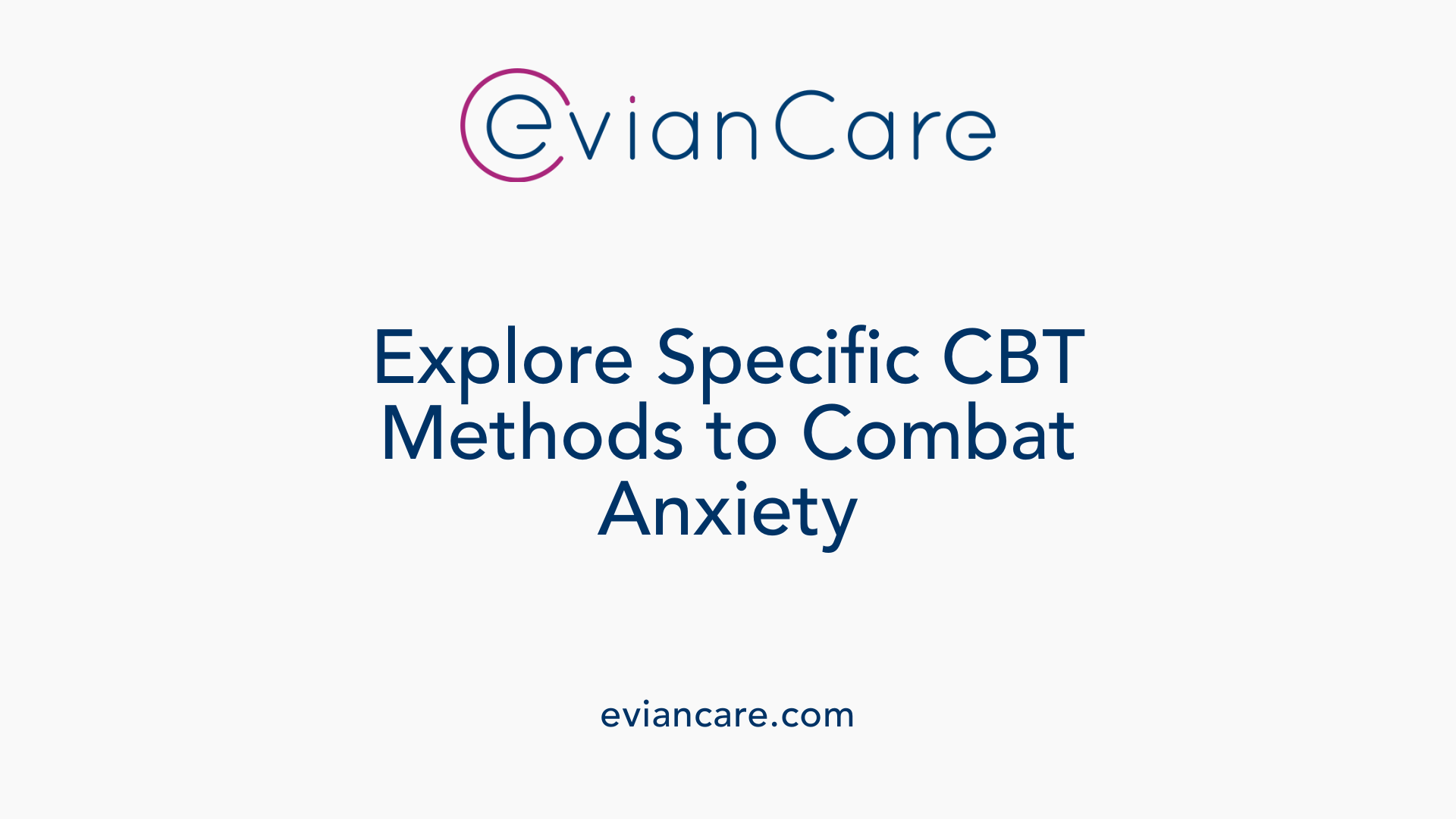
What are some specific behavioral therapy techniques used in CBT for anxiety?
In cognitive-behavioral therapy (CBT) for anxiety, several practical techniques are used to help individuals confront their fears and manage symptoms effectively. One fundamental approach is exposure therapy, which involves gradual confrontation of feared stimuli or situations. Clients typically work through a hierarchy of fears, starting with less anxiety-provoking situations and moving toward more challenging ones. This method helps to desensitize the individual and reduce avoidance behaviors.
Different forms of exposure are employed depending on the disorder. In-vivo exposure involves real-life confrontation, while imaginal exposure uses vivid mental visualization to challenge distressing memories or fears. Interoceptive exposure is specifically designed to face physical sensations associated with panic attacks, such as dizziness or rapid heartbeat, to diminish fear of these sensations.
Relaxation training techniques like deep breathing and progressive muscle relaxation are also integral. These methods aim to control physical symptoms of anxiety, promote calmness, and help clients tolerate distress during exposure exercises.
Behavioral experiments are another tool, allowing clients to test their catastrophic beliefs in real-world scenarios. For example, a person with social anxiety might try speaking in a small group to disprove their fear of being judged negatively.
Furthermore, behavioral activation encourages engaging in rewarding activities, which can lift mood and decrease avoidance. Clients are guided to schedule pleasurable and meaningful activities, breaking the cycle of withdrawal often associated with anxiety.
The importance of graded exposure and hierarchy
A core element of effective exposure therapy is the use of a hierarchy, which involves ranking feared situations from least to most anxiety-provoking. This gradual approach helps clients build confidence and mastery step by step.
By systematically working through their hierarchy, patients can experience small successes that motivate further progress. This incremental process minimizes overwhelming feelings and promotes lasting change.
In summary, techniques like exposure therapy, relaxation training, behavioral experiments, and activity scheduling form the backbone of behavioral strategies in CBT. These methods are tailored to individual needs and used alongside cognitive techniques to effectively reduce anxiety symptoms and improve quality of life.
Effectiveness and Benefits of Behavioral Therapy for Stress and Anxiety
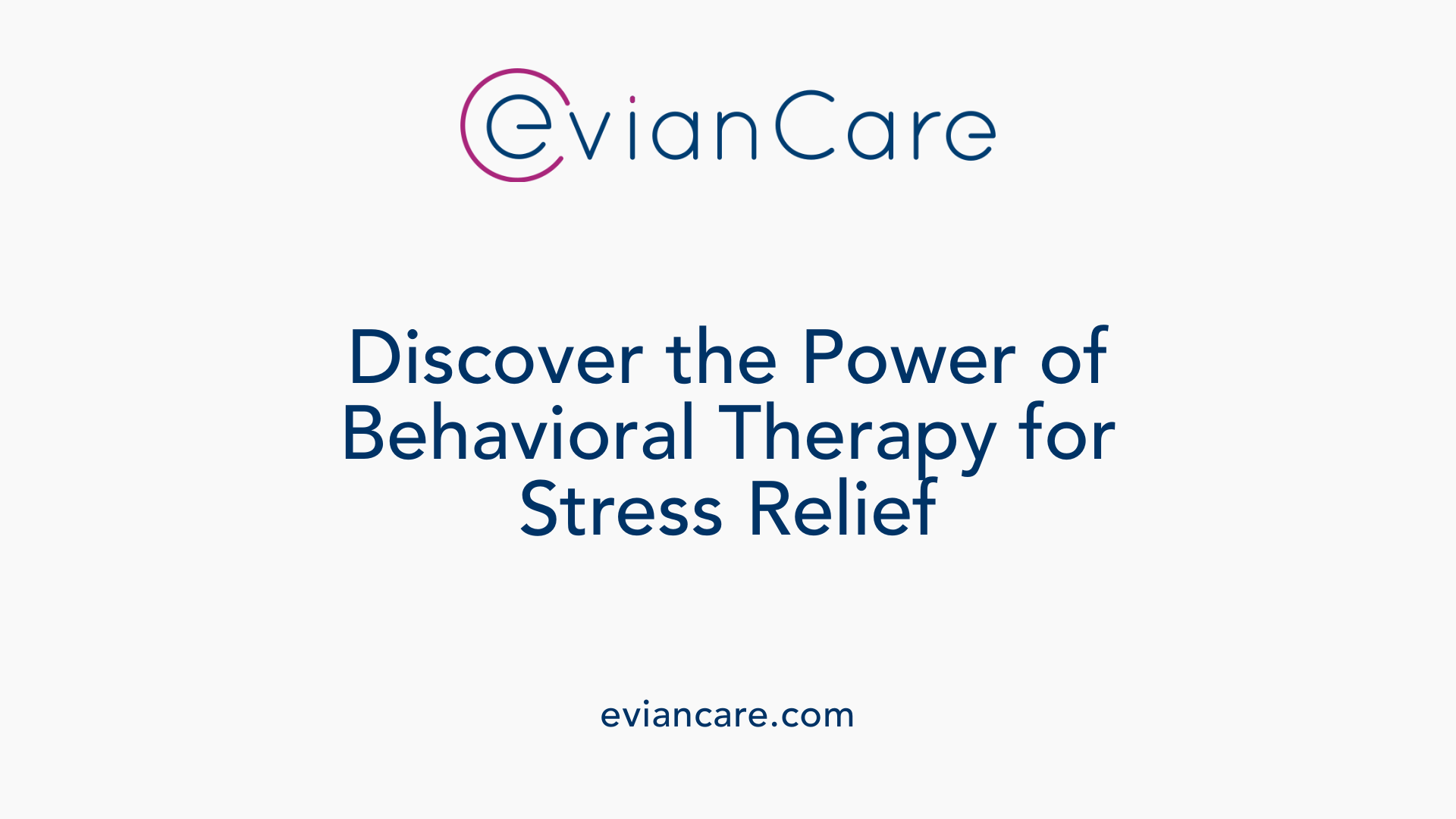
What is the effectiveness and benefit of behavioral therapy techniques for stress and anxiety?
Behavioral therapy methods, especially Cognitive-Behavioral Therapy (CBT), are recognized as highly effective in managing stress and anxiety. Research consistently shows that CBT can significantly reduce symptoms by helping individuals identify and challenge unhelpful thoughts and perceptions that fuel their anxiety.
Core strategies like cognitive restructuring allow clients to examine evidence supporting or contradicting their negative beliefs. Exposure therapies, such as in-vivo or imaginal exposure, gradually help individuals confront their fears in a controlled way, reducing avoidance and building confidence.
Mindfulness exercises, including guided meditation and breathing exercises, foster present-moment awareness and emotional regulation. These techniques help calm the nervous system, decrease physiological arousal, and improve mental clarity.
CBT is not only effective in the short term but also equips individuals with long-lasting skills to cope with future stressors. Practicing these strategies regularly helps maintain progress and prevent relapse.
Further enhancing its impact, various delivery formats like online therapy, telehealth, and virtual reality programs make CBT accessible to a broader population. This flexibility allows individuals to undertake therapy from home or in settings that best suit their needs.
Overall, behavioral therapy provides comprehensive benefits: reducing immediate distress, fostering resilience, and improving overall psychological well-being, making it a prominent choice for stress and anxiety intervention.
Additional Approaches and Techniques Supporting Stress and Anxiety Management
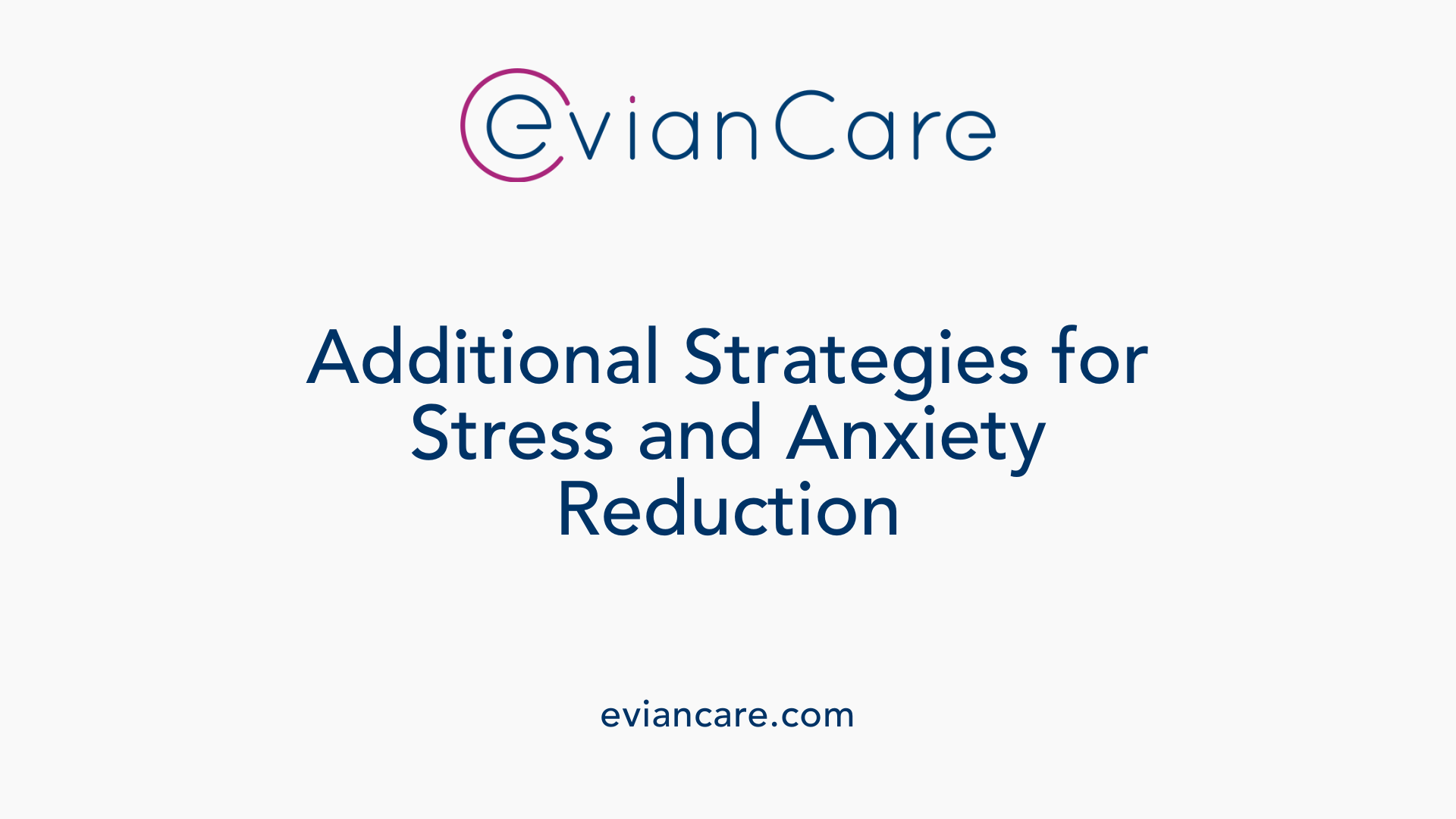
What are some evidence-based behavioral therapy techniques used for stress and anxiety management?
Evidence-based behavioral therapy techniques for stress and anxiety management include several structured interventions. Cognitive-behavioral therapy (CBT) is a prominent method that helps individuals identify and challenge unhelpful thoughts and behaviors, replacing them with healthier patterns.
Mindfulness-based interventions, such as Mindfulness-Based Stress Reduction (MBSR), teach individuals to observe their thoughts and feelings without judgment. These practices improve emotional regulation and have been shown to be as effective as some medications for reducing stress.
Relaxation techniques are crucial components of stress management. These include progressive muscle relaxation—which involves tensing and relaxing muscle groups—and deep breathing exercises that regulate physiological responses to stress.
Additional modalities like biofeedback, which provides real-time feedback on bodily functions such as heart rate, can help individuals learn to control physiological arousal.
Complementary practices, including yoga, tai chi, and qigong, are also effective in reducing stress levels. They are especially beneficial for children and individuals with generalized anxiety disorder.
Research supports the use of hypnosis, performed by trained professionals, for reducing anxiety related to medical and dental procedures.
How do mindfulness and relaxation exercises contribute to managing stress?
Mindfulness exercises help individuals stay present and aware of their thoughts and physical sensations, reducing rumination and emotional reactivity. Guided meditation, including visualization techniques, promotes relaxation and emotional balance.
Relaxation exercises like diaphragmatic breathing slow down the nervous system, which helps combat the physiological symptoms of anxiety such as rapid heartbeat and shallow breathing. Progressive muscle relaxation further decreases muscle tension often associated with stress.
These techniques can be practiced regularly, either as part of a therapy program or independently, to build resilience against daily stressors.
What is the role of physical activity and lifestyle factors?
Engaging in regular physical activity releases endorphins, chemicals in the brain that improve mood and reduce feelings of anxiety. Activities like walking, running, cycling, or swimming are effective mood lifters.
Lifestyle factors such as maintaining good sleep hygiene, eating a balanced diet, and managing caffeine and alcohol intake significantly influence stress levels. Adequate sleep and proper nutrition support overall mental health and enhance the effectiveness of therapy.
Time management skills and establishing routines can further reduce stress by providing structure and predictability.
How does psychoeducation and skill-building support stress and anxiety reduction?
Providing individuals with psychoeducation about stress and anxiety helps demystify their experiences and reduces fear. Learning about the physiological and psychological aspects of stress empowers clients to take active steps in managing their symptoms.
Skill-building activities include problem-solving, assertiveness training, and self-monitoring. These practitioners equip individuals with practical tools to handle difficult situations more effectively.
Together, these approaches foster a proactive mindset towards stress management, improve coping skills, and promote long-term resilience.
Practical Tips and Lifestyle Modifications for Anxiety Relief

What are effective lifestyle modifications for managing stress and anxiety?
Making simple changes to daily routines can have a significant impact on reducing anxiety and improving overall well-being. Implementing strategies related to time management, sleep hygiene, nutrition, social support, and assertiveness can promote a calmer, more balanced life.
How can time management strategies help with anxiety?
Organizing tasks and setting realistic goals help prevent feeling overwhelmed. Techniques such as prioritizing urgent tasks, breaking large tasks into smaller steps, and creating to-do lists can reduce stress. Ensuring time for relaxation, hobbies, and self-care balances responsibilities and prevents burnout.
Why are sleep hygiene and nutrition crucial?
Adequate, quality sleep is essential for emotional regulation. Establishing a regular sleep schedule, avoiding screens before bedtime, and creating a restful environment improve sleep quality. Nutrition impacts mood; a balanced diet rich in fruits, vegetables, lean proteins, and whole grains stabilizes energy levels and reduces mood swings.
How does social support and assertiveness contribute to anxiety relief?
Connecting with friends, family, or support groups provides emotional comfort and decreases feelings of isolation. Assertiveness training helps individuals express their needs and set boundaries confidently, reducing interpersonal stress. Clear communication fosters healthier relationships and boosts self-esteem.
Summary Table of Lifestyle Strategies|Category|Method|Purpose| |------------------------|------------|-----------|---------| | Time Management| Prioritizing tasks, creating schedules| Reduces overwhelm and stress| | Sleep Hygiene| Regular sleep schedule, restful environment| Improves mood and emotional resilience| | Nutrition| Balanced diet, hydration| Stabilizes mood and energy| | Social Support| Connecting with loved ones, support groups| Eases emotional burden| | Assertiveness| Communicating needs, boundary-setting| Reduces interpersonal conflicts|
How does behavioral therapy complement these lifestyle strategies?
Behavioral techniques like cognitive restructuring and exposure exercises are highly effective in tackling anxiety. Combining these with lifestyle modifications creates a holistic approach to stress management. Evidence shows that such integration leads to better long-term outcomes, empowering individuals to handle daily stressors more effectively.
Incorporating Mindfulness and Body-based Practices
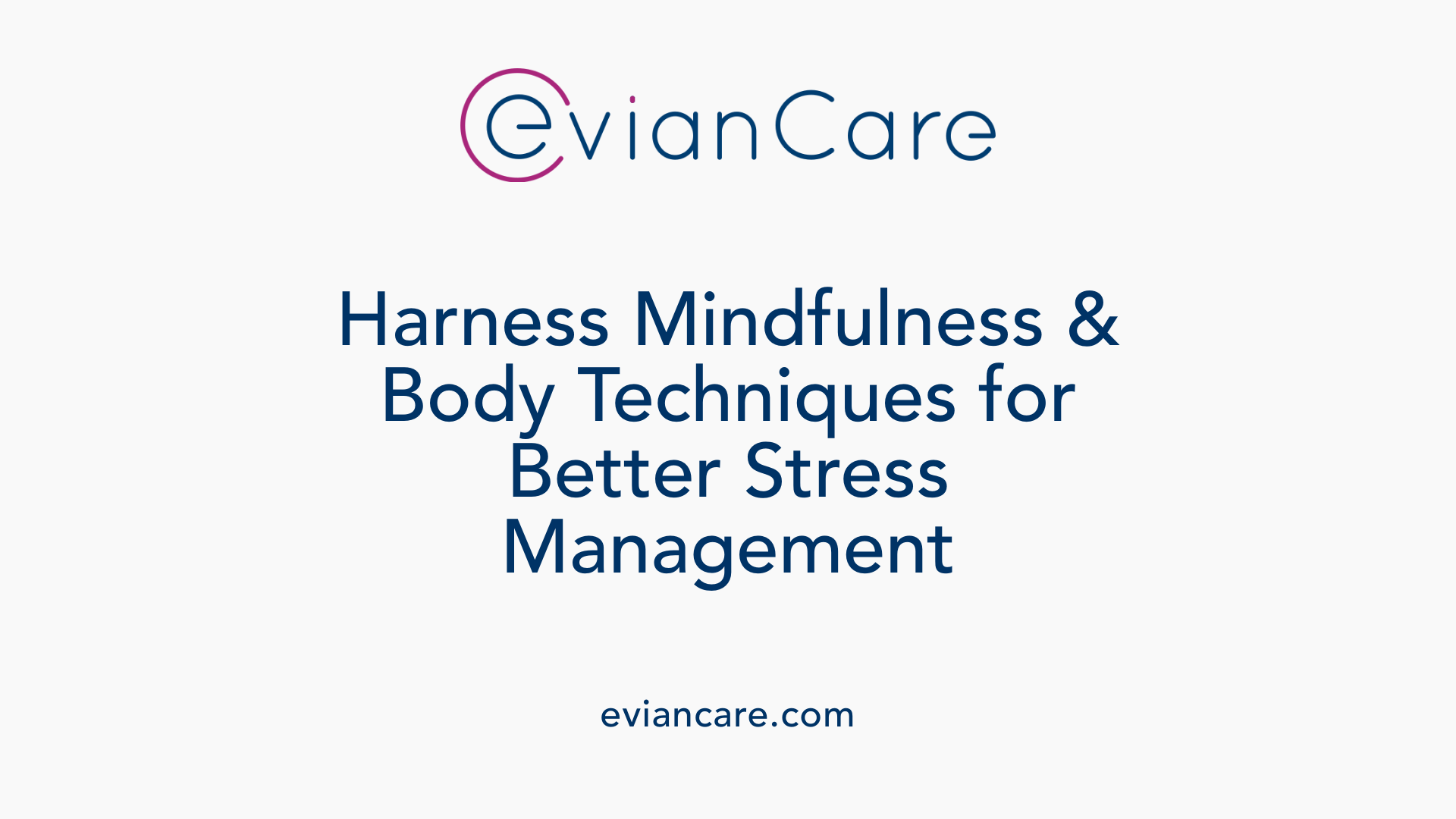
What are some evidence-based behavioral therapy techniques used for stress and anxiety management?
A variety of proven strategies can help reduce stress and manage anxiety effectively. Cognitive-behavioral therapy (CBT) is among the most well-supported methods, focusing on changing negative thinking patterns and behaviors that contribute to anxiety.
Mindfulness-based interventions, such as mindfulness-based stress reduction (MBSR), have gained recognition for their ability to improve emotional regulation. These practices encourage paying attention to the present moment without judgment, helping people become more aware of their thoughts and feelings.
In addition to talk therapies, relaxation techniques like progressive muscle relaxation and deep breathing exercises target the physical symptoms of stress. These methods promote a calm nervous system and reduce feelings of tension.
Complementary approaches such as yoga, tai chi, and Qigong are also beneficial, especially for children and specific disorder types like generalized anxiety disorder. These practices combine gentle movement and mindfulness, supporting both physical and mental well-being.
Hypnosis, when performed by trained professionals, has shown promise for reducing anxiety related to medical and dental procedures.
Mindfulness meditation and guided practices
Mindfulness meditation involves sitting quietly and focusing on your breath, sensations, or a guided visualization, helping you stay grounded and present. Guided practices often include verbal instructions that lead you through relaxation exercises, promoting mental clarity and emotional balance.
Breathing exercises and body awareness
Deep, diaphragmatic breathing is one of the simplest yet most effective tools for managing immediate anxiety. Regulating your breath can slow your heart rate and relax tense muscles. Body awareness techniques, such as scanning through different parts of your body, help recognize physical tension and facilitate relaxation.
Impact on physical and emotional health
These practices have a dual benefit. Physically, they lower cortisol levels, reduce muscle tension, and improve immune function. Emotionally, they enhance resilience, reduce symptoms of anxiety and depression, and foster a sense of control and calm.
Incorporating mindfulness and body-based practices into daily routines provides accessible tools for managing stress, promoting overall well-being, and complementing traditional therapies like CBT.
The Power of Behavioral Techniques in Stress Management
Behavioral therapy techniques, rooted in evidence-based principles such as CBT and mindfulness, offer comprehensive tools for managing stress and anxiety. They empower individuals to understand the links between thoughts, feelings, and behaviors, and equip them with practical skills like exposure, cognitive restructuring, relaxation, and mindfulness. Whether delivered in person or through online platforms, these methods focus on fostering resilience, promoting healthier emotional responses, and improving quality of life. Embracing these techniques as part of a holistic approach to mental health can significantly enhance stress management and emotional well-being, making behavioral therapy an invaluable resource in today's high-pressure environment.
References
- Cognitive-Behavioral Treatments for Anxiety and Stress-Related ...
- Online self-help CBT techniques - Every Mind Matters - NHS
- Stress | Fact Sheet - ABCT
- 35+ Powerful CBT Exercises & Techniques for Therapists
- Cognitive Behavioral Therapy (CBT): What It Is & Techniques
- Cognitive Behavioral Therapy for Stress Management
- Cognitive behavioral therapy - Mayo Clinic
- Stress Awareness Month 2023: CBT Techniques to Manage Stress












